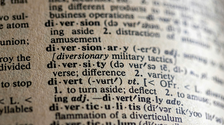Matthew
职业教师How Non-Verbal Cues Can Boost Your Confidence at Work
Ever walked into a meeting and felt like the most important thing you were saying wasn’t being heard? You’re not alone—and the issue might not be *what* you’re saying, but *how* you’re saying it.
Non-verbal cues are the secret sauce to workplace communication. They speak volumes before you’ve even opened your mouth. Whether you're leading a presentation, pitching an idea, or simply talking to your team, how you carry yourself can make or break the conversation. Here’s how to use body language to your advantage and become a more confident speaker in any professional setting.
Eye Contact: The Silent Connector
Maintaining strong eye contact is like building an invisible bridge between you and the person you’re speaking to. It's more than just looking at someone; it signals confidence, trustworthiness, and that you’re fully engaged in the conversation. Next time you're in a meeting, try this: make eye contact, especially when delivering your main points. Not only will you seem more self-assured, but your message will land stronger.
Posture: The Foundation of Presence
Slouching in your chair? You might be sending signals of disinterest or insecurity without even realizing it. Standing or sitting tall, on the other hand, commands attention. Good posture is like wearing an invisible suit of armor—it gives you presence. Walk into a room with your head held high and shoulders back, and watch how people start paying attention before you even say a word.
Gestures: Speaking With Your Hands
Have you ever noticed that the best speakers seem to use their hands effortlessly? There’s a reason for that. Gestures, when done naturally, add emphasis to your words and keep your audience engaged. Think of hand movements as an extension of your voice—they can add clarity, highlight key points, or just make you seem more approachable. But remember: less is more. Overdoing it can look chaotic
2024年9月16日 10:52



